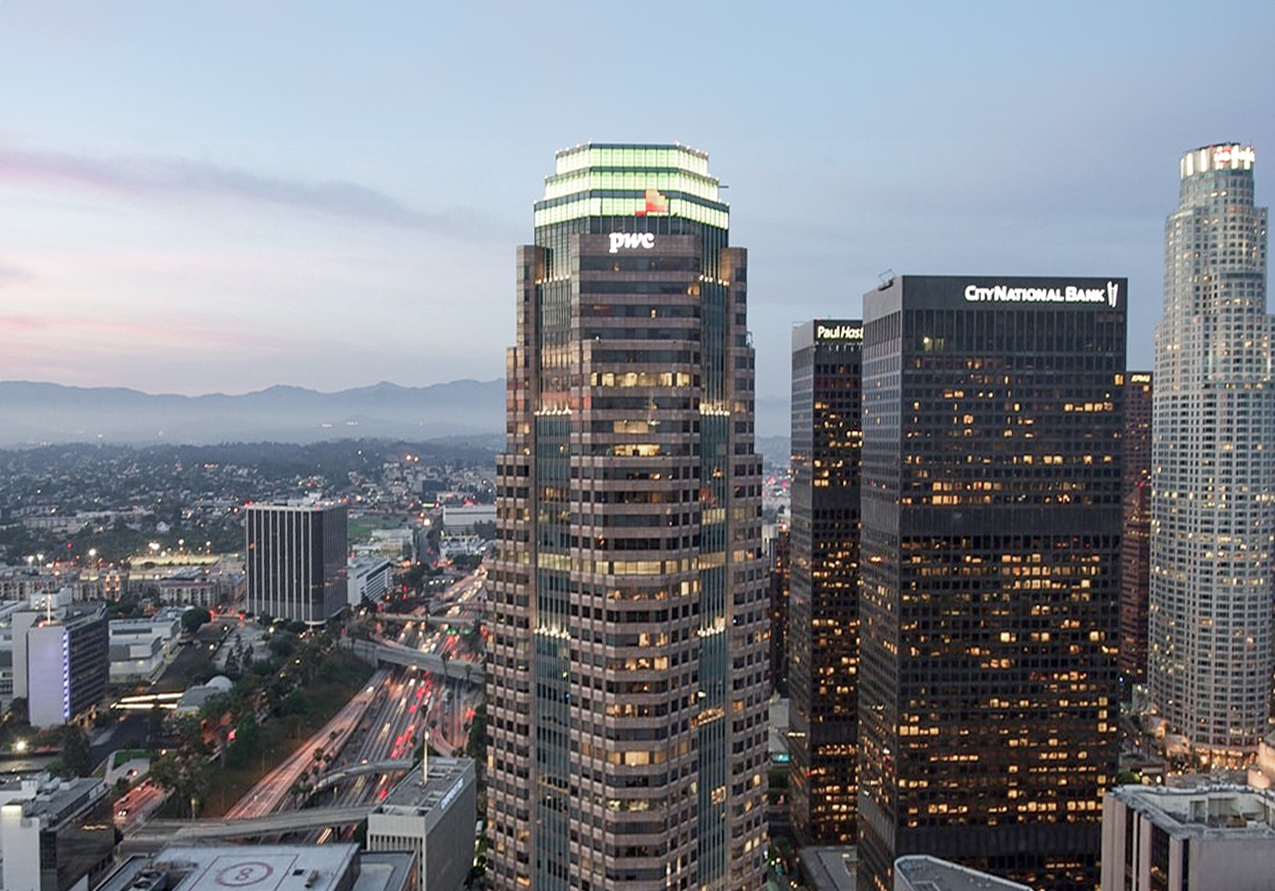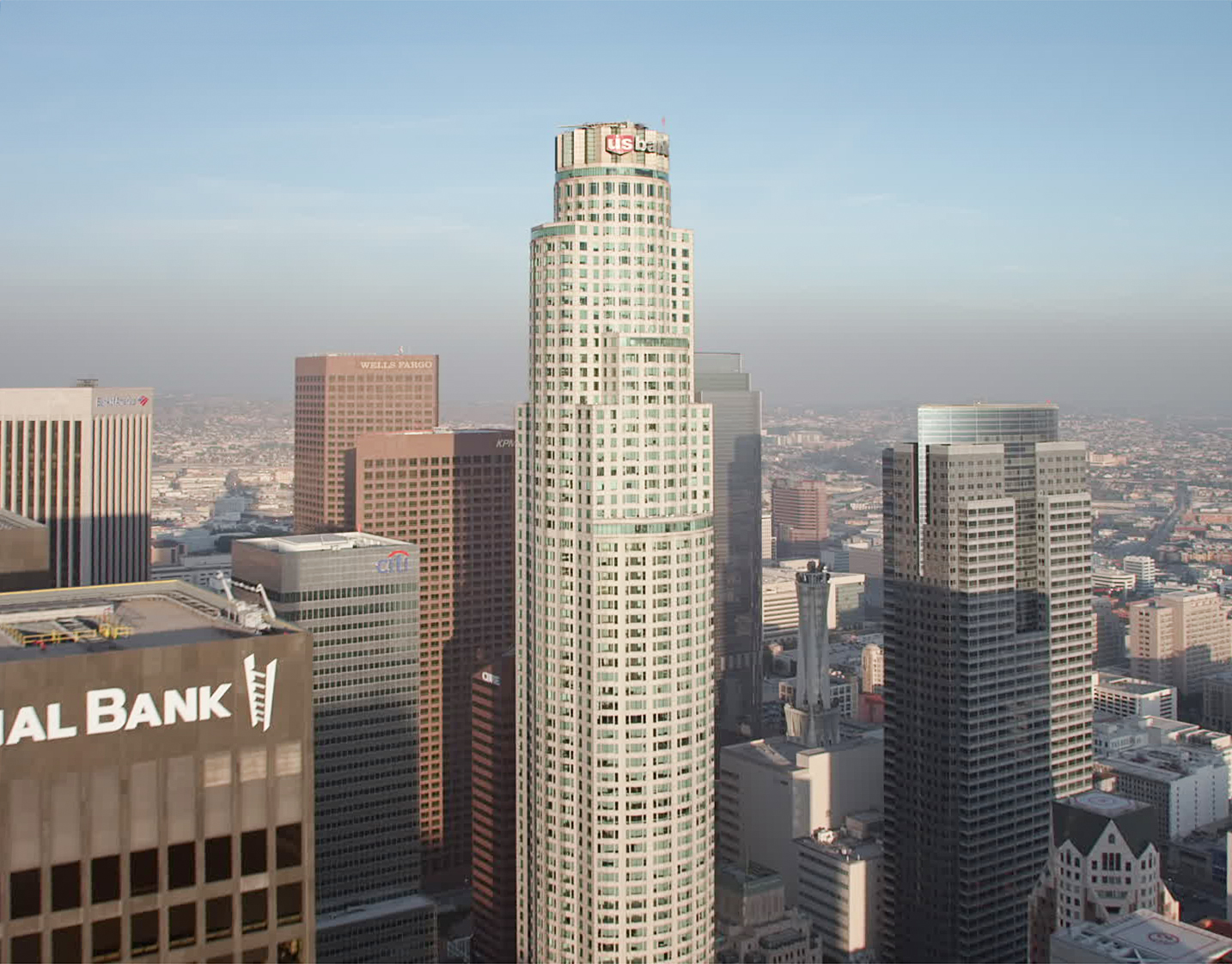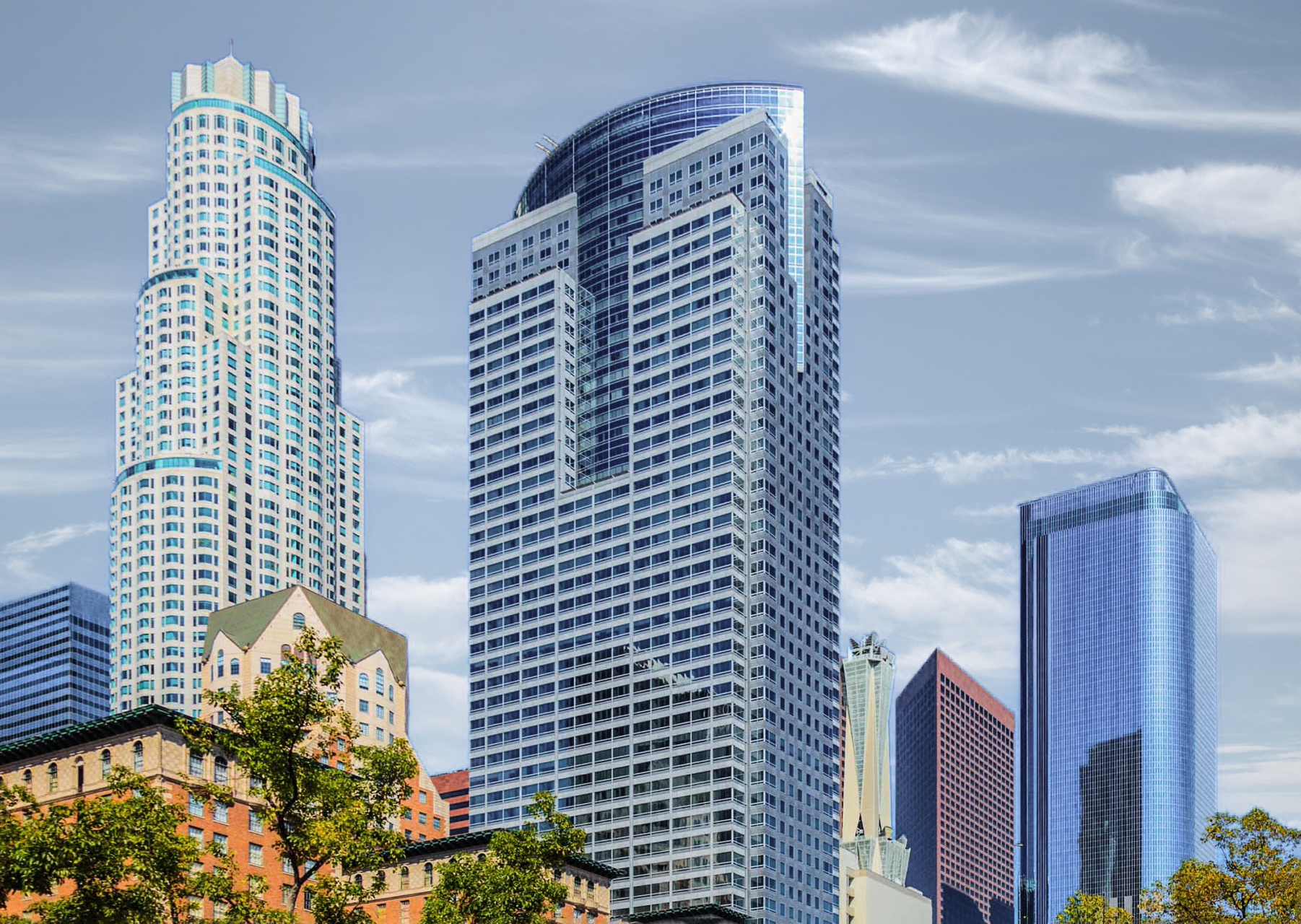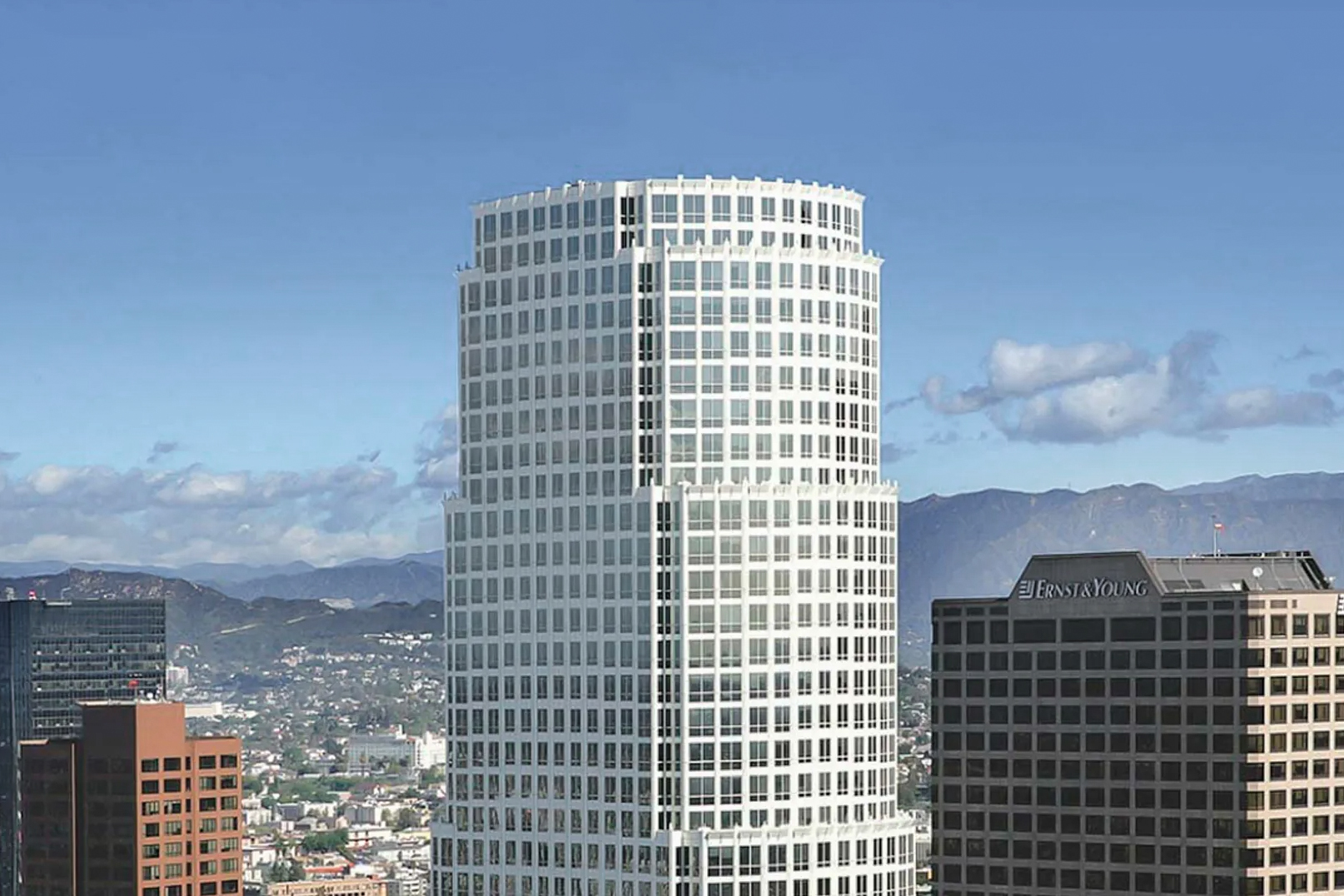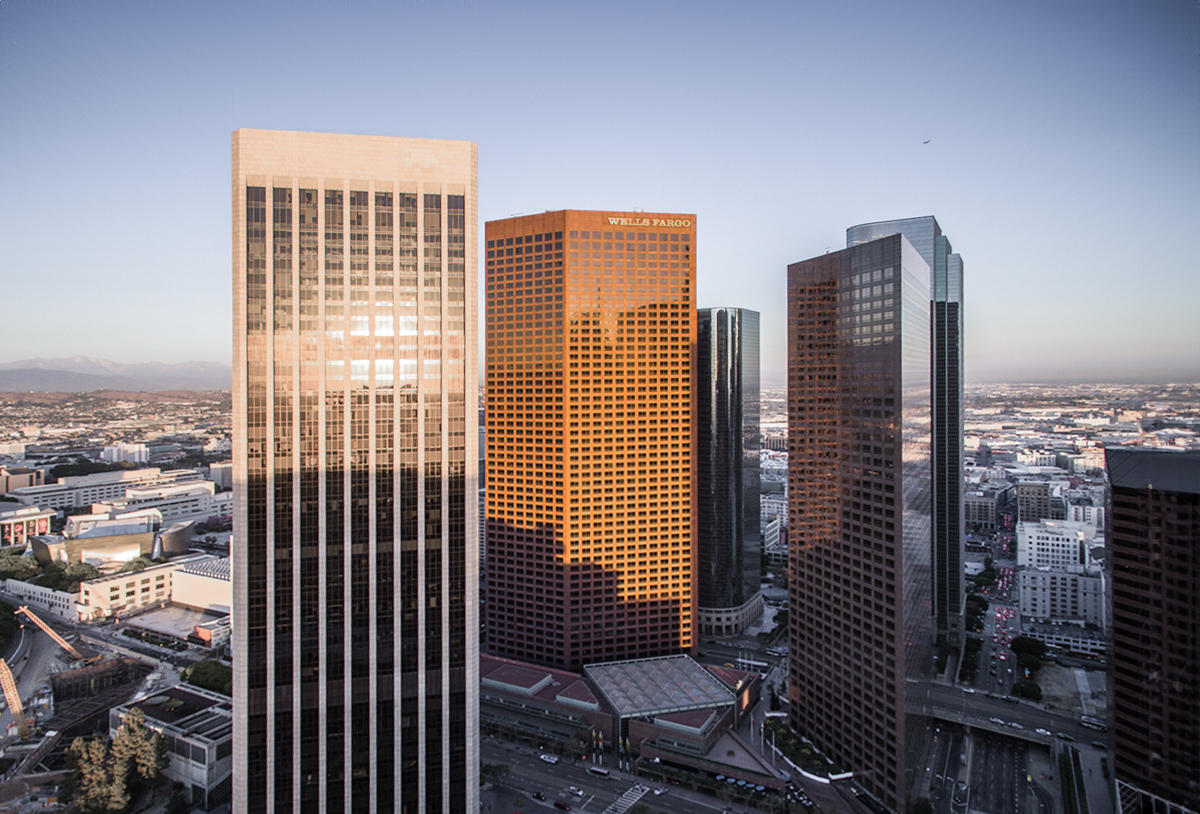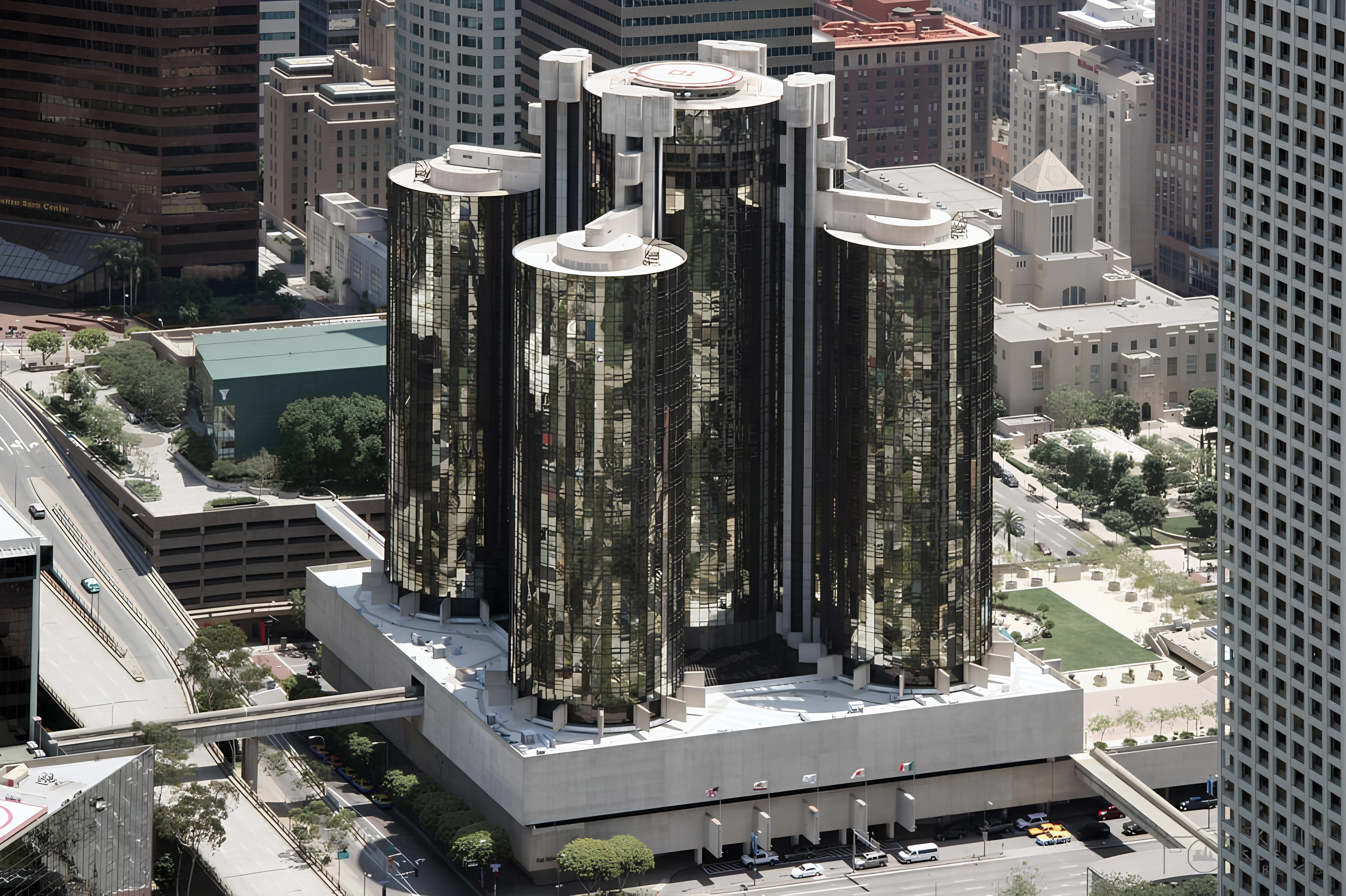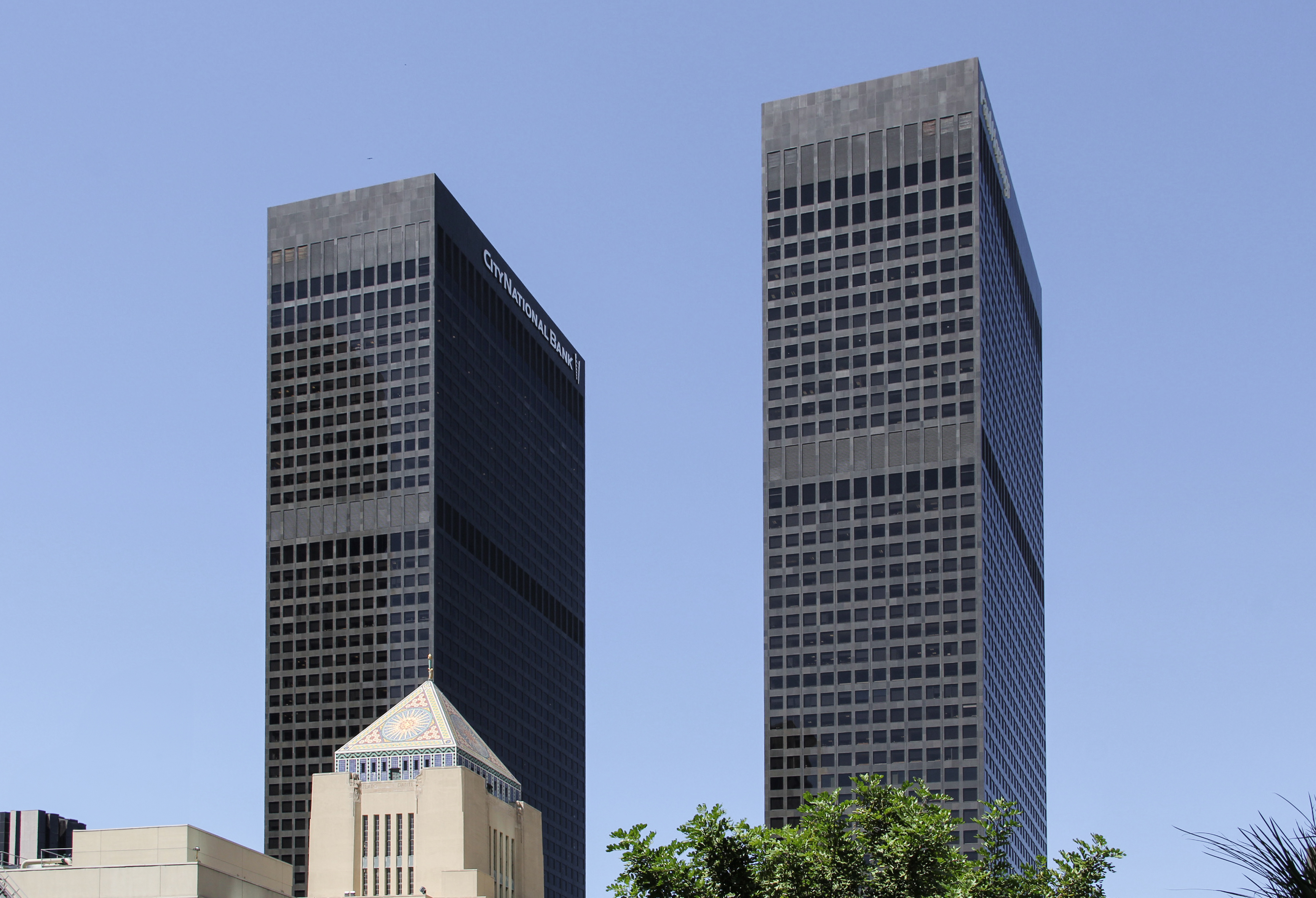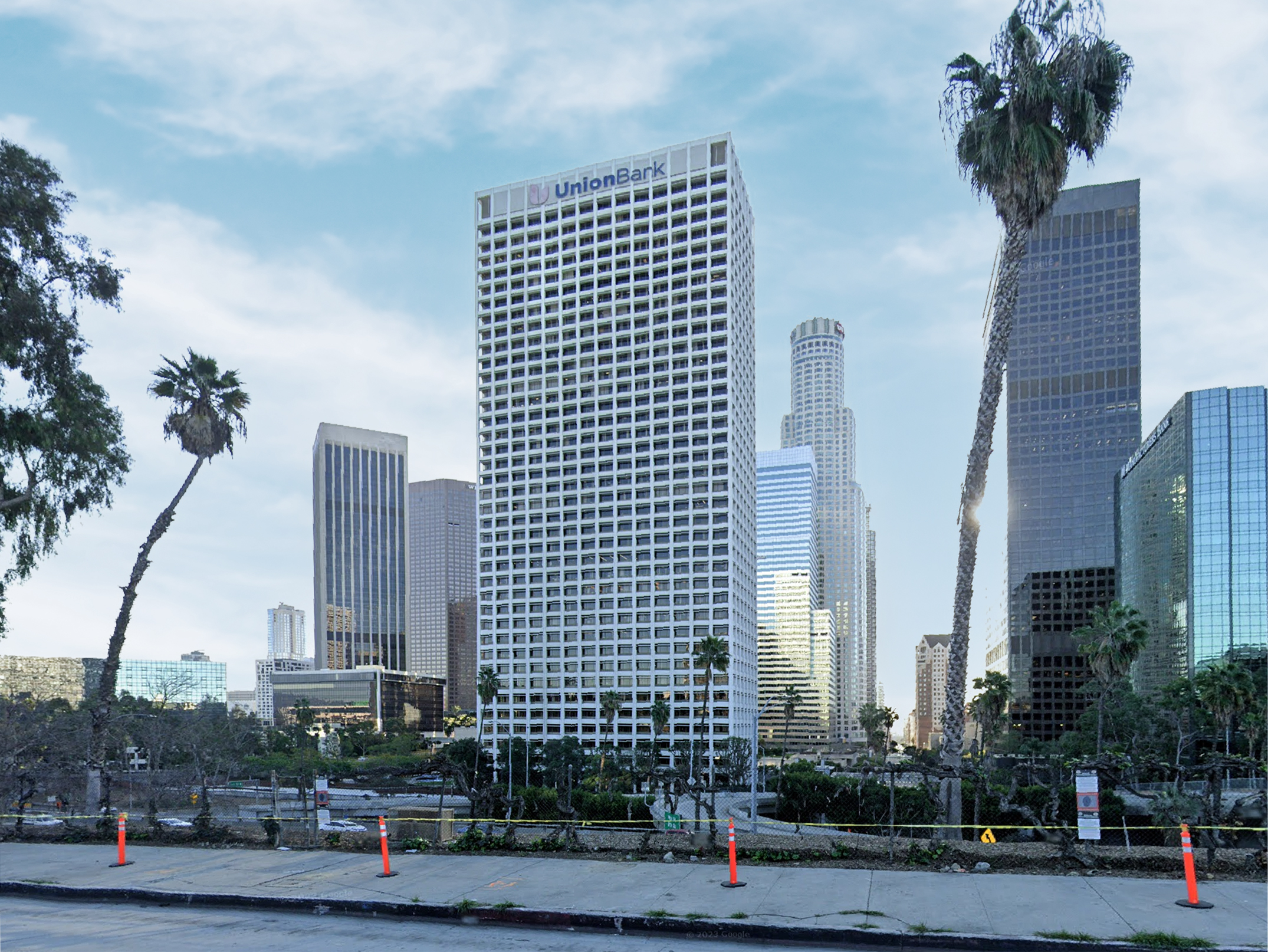The Figueroa at Wilshire Building is a Postmodernist skyscraper designed by Albert C. Martin & Associates, and built between 1988 and 1990 in Los Angeles, CA.
Figueroa at Wilshire Building is not the only name you might know this building by though. It is common for companies to want to attach their names to iconic buildings when they move in, or for the general public to come up with nicknames, and this one is no exception. The building has changed names several times over the years, and is also known as:
- Sanwa Bank Plaza between 1990 and 0.
- Mitsui Fudoson Tower.
- United California Bank Building.
Its precise street address is 601 S. Figueroa Street, Los Angeles, CA. You can also find it on the map here.
The Figueroa at Wilshire Building has received multiple architecture awards for its architectural design since 1990. The following is a list of such prizes and awards:
- Beautification Award Best New Commercial High Rise; Los Angeles Business Council in 1991
- Office Building of the Year Building Owners & Managers Association (BOMA) in 1991
- Rose Award Downtown Breakfast Club in 1991
- Office Building of the Year Building Owners & Managers Association (BOMA) in 1995
The design showcases a square pedestal at street level, which ascends through multiple setbacks to culminate in a striking octagonal glass crown.
At ground level the building opens up to a spacious open-air public plaza.
